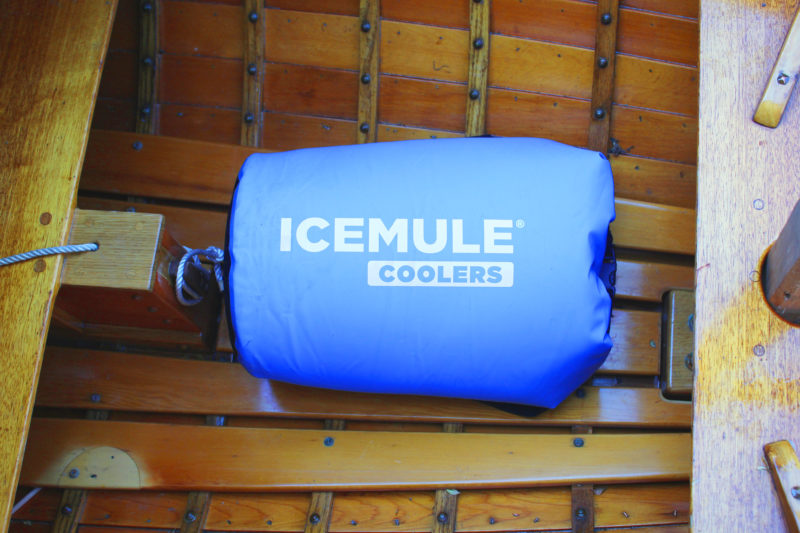 SBM photographs
SBM photographsThe IceMule cooler is a dry bag within a dry bag with insulation in between the two.
Meat and cold drinks are two commodities I consider essential for a weekend on the water. To keep the former at a safe temperature and the latter chilled, a bulky rigid cooler is the usual solution. But why would you crowd a small boat with an item that takes up a lot of space, performs only one function, and is useless once its contents are gone?
Enter the IceMule cooler: it looks like an ordinary dry bag, but it incorporates an insulation system designed to keep iced food and drinks cold for up to 24 hours. Once the food is consumed, you can roll the IceMule up into a compact, easily stowed package, or use it as a dry bag.
IceMule makes several different models but the cooling system for all of them is the same: an exterior of coated material and inner waterproof liner sandwiching a layer of insulation. A valve is used to inflate the enclosed pocket of air to provide additional insulation or increase the amount of padding the cooler can provide if it’s being used as a dry bag to protect fragile equipment. Once contents are loaded into the bag, the top is folded down and clasped with snap buckles.
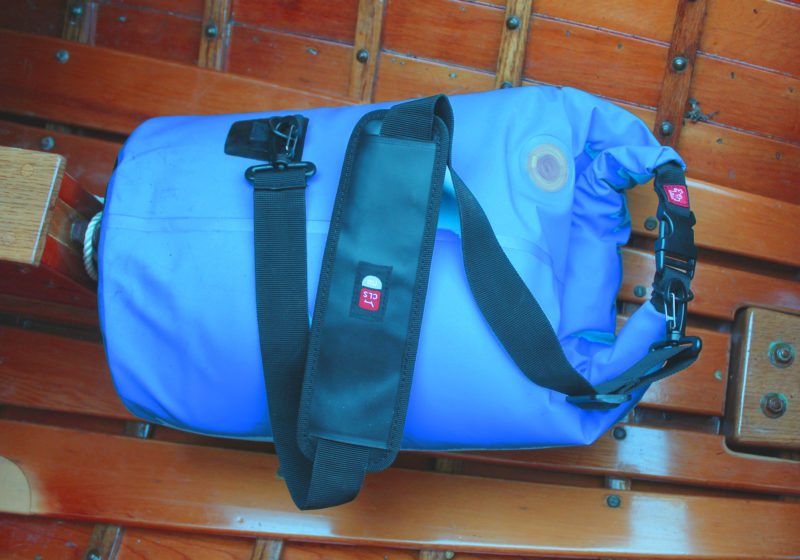
A shoulder strap frees up your hands to carry other things. The valve near the top of the bag allows you to add air to the interior layer of insulation to help trap cold and deflate the bag to roll it up for storage.
I tried the 15-liter Classic Cooler on a couple of 80-degree days. Its exterior and interior materials were similar to urethane-coated nylon and felt tough and durable. Fully loaded and with the top rolled and secured, the Classic Cooler is approximately 10″ in diameter and 18″ from bottom to top. When empty the cooler was easily rolled up and secured in a mesh storage bag measuring 4″ in diameter and 15″ long. Its soft exterior and single padded shoulder strap made carrying a full cooler comfortable, even on a half-mile walk. The IceMule Pro coolers are made more like backpacks and have two shoulder straps and a waist belt.
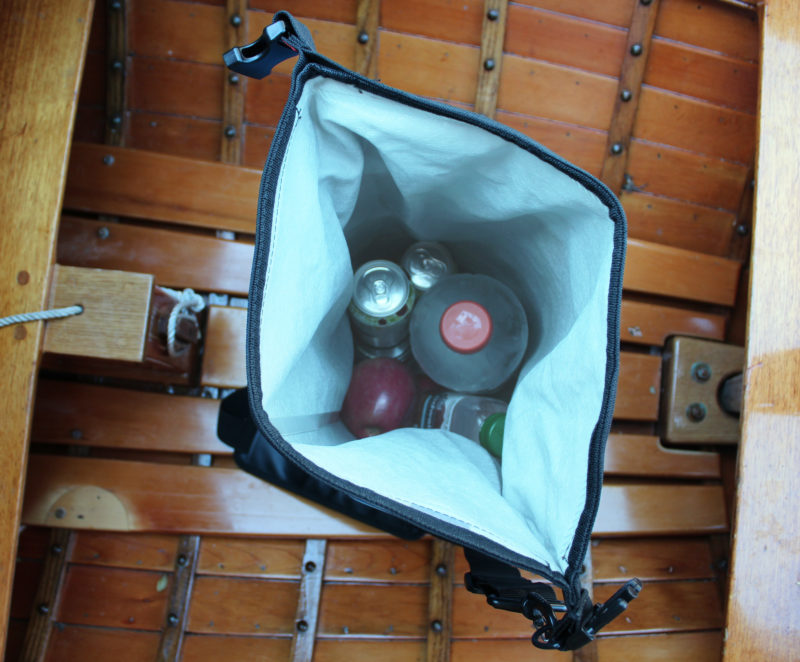
Using a frozen bottle of water (here with the orange cap) saves the melt water for drinking but doesn’t keep the contents of the IceMule as cold as loose ice does.
I packed the IceMule with a variety of provisions and found that it easily held a gallon of milk or eight 12-ounce beverage cans. Even without adding ice, previously chilled items remained cool for a few hours, long enough for an afternoon outing. I like to take plastic bottles of frozen water on a trip; they serve as ice packs and as they melt they provide cold water for drinking. However, when used in the IceMule they kept chilled only the items they were in contact with. Packing the cooler with loose ice cubes or chunks of block ice produced the best results. After about 16 hours there was still plenty of ice in the IceMule; after 20 hours there was still a small amount of ice remaining, and after 26 hours the drinks, sitting in now-cool water, were still cold enough to enjoy. As with any cooler, the downside to using loose ice is the resulting water is wasted and fresh products like meat and vegetables must be kept in waterproof containers.
For weekend outings and for traveling between ports where ice and fresh supplies are available, the IceMule Classic is a sturdy and effective cooler. As the weather cools with the coming of fall, the cooler can be used to carry a hot meal with a heated gel pack. Good food and cold drinks make happy sailors.![]()
Bruce Bateau sails and rows traditional boats with a modern twist in Portland, Oregon. His stories and adventures can be found at his web site, Terrapin Tales.
IceMule coolers are available online from the manufacturer and at numerous outdoors retailers. The medium Classic reviewed here retails for $59.95.
Is there a product that might be useful for boatbuilding, cruising or shore-side camping that you’d like us to review? Please email your suggestions.
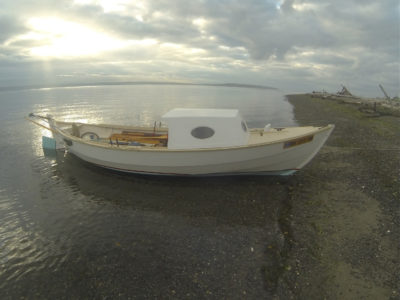

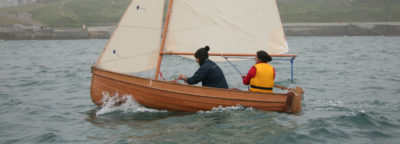
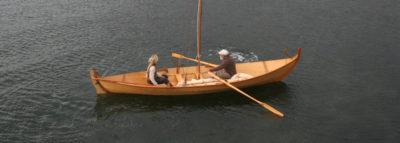
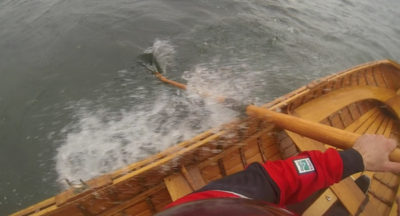
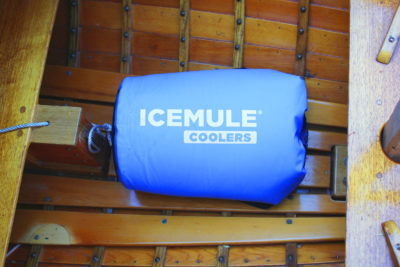
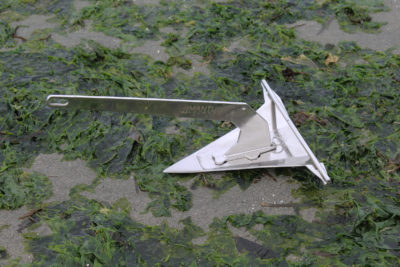
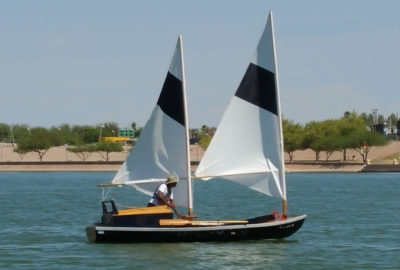
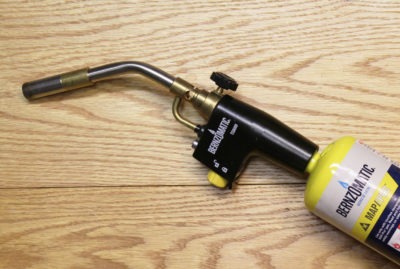
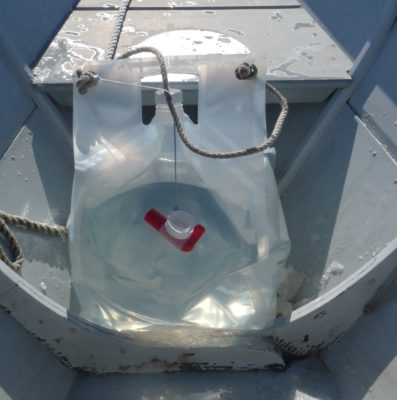
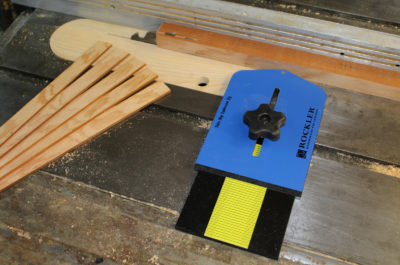
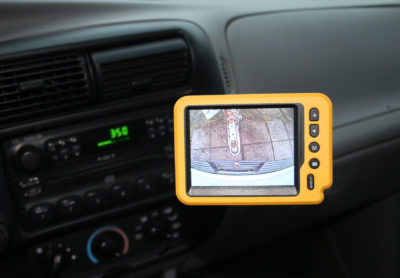
Join The Conversation
We welcome your comments about this article. If you’d like to include a photo or a video with your comment, please email the file or link.